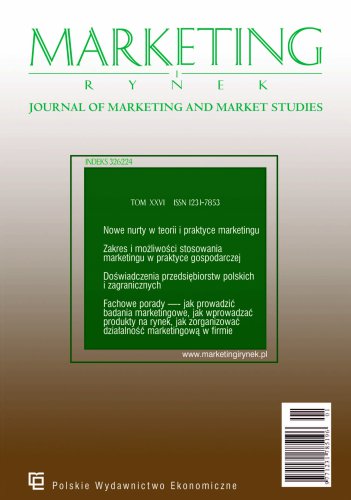Research purpose. The current business environment is characterized by extreme competitiveness and consumer bargaining power due to the amount of information available, which makes it increasingly difficult for brands to stand out from the competition and attract new clients. Despite great efforts to create a unique value proposition to respond to changing consumption habits and preferences, a brand will not achieve its goals without the basic and primary value stage which is the creation of awareness. Well-known brands gain advantage over the unknown ones because they seem more trustworthy to the consumer and are therefore more commonly purchased (Shabbir et al., 2017). Increasing awareness allows to convey to the consumer valuable brand-related information, which is consciously combined with certain image-shaping associations. Brand awareness becomes even more important in the market that is filled by many brands with a similar value proposition. The market of such everyday consumer goods, as bread and pastry products, is one of these. The purpose of this article is to identify solutions allowing to increase the brand awareness of bread and pastry products.
Design/Methodology/Approach. Analysis of statistical databases and online sampling were chosen as research methods. A questionnaire for sampling was developed applying validated scales of brand awareness, consumer habits, and positioning of the brand in the market.
Findings. Empirical research has revealed that such elements of the marketing complex, as the product range (i.e., the product and its attributes related to quality, health benefits and packaging), distribution of bakery products in a diversity of outlets, as well as marketing communication tools (advertising on TV, at the point-of-sale, on social networks, outdoor advertising) and sales promotion (discounts) receive the greatest attention from the consumers of bakery products. Recommendations for raising awareness include development of the brand personality by appointing a brand ambasador that is in line with the core concept and values of the brand and is attractive and close to the identity of a target consumer. It is suggested to use non-standard and outstanding boards at the point of sale, outdoor advertising in the busiest places of cities and on the main roads. It is also proposed to use paid advertising on social networks, combining it with content marketing and placing not only brand-related entries, but also general, consumer-relevant information about the bread and pastry market. Sales promotion activities should be in line with marketing communication tools. These recommendations would contribute to raising the awareness of brands in the bread and pastry market, as the study revealed that consumers have little knowledge of brands in this market and do not attribute them to their respective manufacturers, which influences their purchasing decision.
Originality/Value/Practical implications. Analysis of statistical data and consumer opinion surveys allows to make assumptions about the bread and pastry market brand awareness management in Lithuania. These insights can be useful for companies engaged in producing and selling food products in the Lithuanian market.
Keywords: brand awareness; brand image; elements of brand identity; marketing communication

